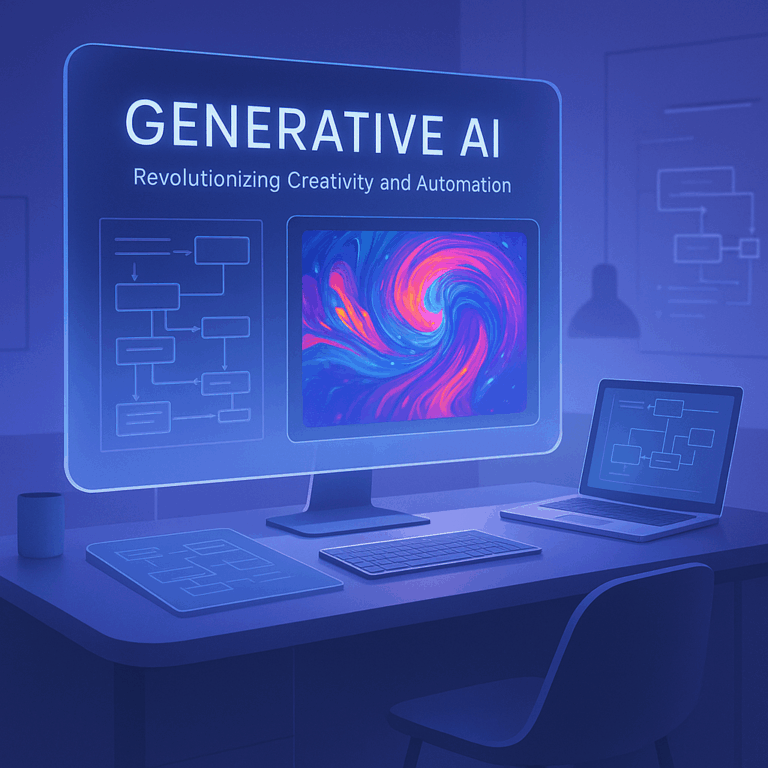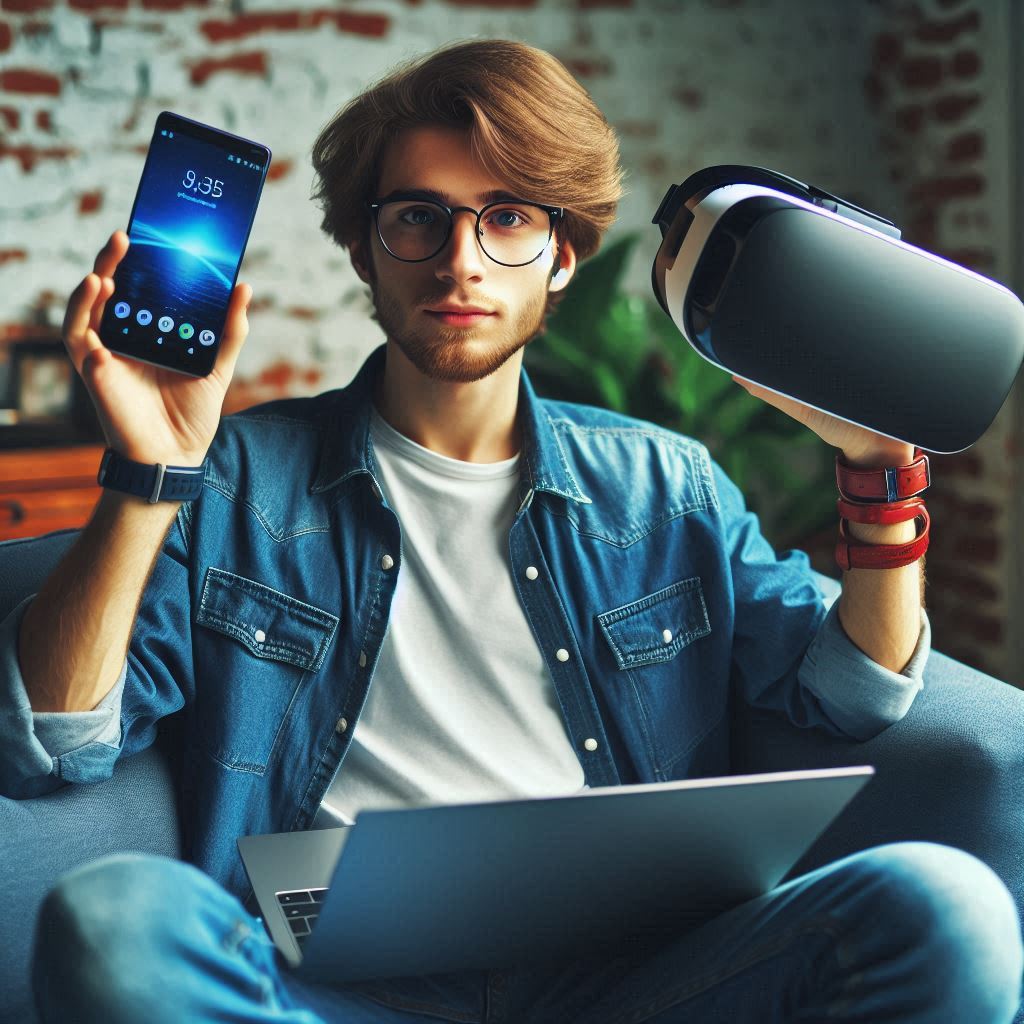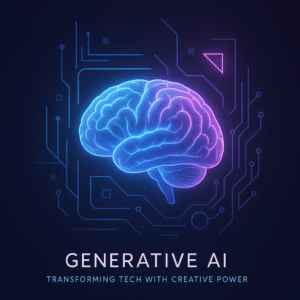The Dawn of Generative AI: Redefining Creativity and Automation
In the symphony of today’s tech innovations, generative artificial intelligence (AI) is emerging as a revolutionary force, capable of transforming creativity, automation, and problem-solving across industries. Unlike traditional AI models that analyze and classify existing data, generative AI crafts novel content—ranging from text and images to music and complex designs—bridging human imagination with computational power. This burgeoning technology, exemplified by models such as OpenAI’s GPT series and DALL·E, is reshaping the boundaries of what machines can accomplish.
Generative AI leverages advanced machine learning techniques, particularly deep learning architectures like transformers and generative adversarial networks (GANs), to synthesize realistic and contextually relevant outputs. At its core, this technology functions by learning the intricacies of vast datasets, then generating original artifacts that mirror or innovate upon the patterns within this information. The technical elegance of generative AI lies in its ability to not just replicate but innovate—producing outputs that often blur the lines between machine-created and human-created work.

Real-World Transformations Across Industries
The impact of generative AI extends across a diverse array of sectors. In healthcare, for instance, it accelerates drug discovery by proposing novel molecular structures with potential therapeutic benefits—a task traditionally reliant on costly and time-consuming experiments. Pharma companies harness generative models to simulate thousands of compounds rapidly, streamlining the path from lab bench to patient.
In creative industries, generative AI serves as a collaborator rather than a replacement. Writers, designers, and artists use AI to overcome creative blocks, generate preliminary drafts, or explore new stylistic avenues. Media organizations deploy AI to automate content creation for personalized news or marketing, adapting messaging dynamically to consumer preferences. Gaming companies harness generative techniques to build immersive worlds and realistic characters, democratizing content generation.
Manufacturing and engineering also benefit enormously. Generative design tools use AI to conceptualize structurally optimized components that a human engineer might never envision, balancing lightness, strength, and cost with unprecedented efficiency. As a result, industries from aerospace to automotive are witnessing lighter, stronger, and more sustainable products co-designed by human expertise and computational ingenuity.
Societal and Industrial Impact: A Double-Edged Sword
The proliferation of generative AI in tech has catalyzed significant societal and industrial shifts while raising profound questions. On one hand, it promises enhanced productivity, broader creative expression, and accelerated innovation cycles. On the other, it disrupts traditional workflows, threatens job roles tied to routine creative and analytical tasks, and challenges legal frameworks concerning authorship and intellectual property.
Industrially, enterprises must adapt their talent strategies—upskilling human workers to partner effectively with AI systems becomes paramount. Moreover, organizations grapple with balancing automation gains against ethical considerations and societal expectations. For example, hyper-personalized advertising driven by generative AI can enhance consumer experience but also risks inflaming privacy concerns.
On a societal level, the democratization of content creation can empower voices previously marginalized, yet it simultaneously makes the dissemination of misinformation easier. Deepfakes—AI-generated synthetic media—have demonstrated the dark potential of generative technology to manipulate public perception, undermining trust in media and institutions.
Ethical Considerations in the Age of Machine Creativity
Ethics surrounding generative AI remain at the forefront of discourse. Key concerns include data bias, transparency, accountability, and consent. Generative models trained on existing datasets can propagate historical biases, reinforcing stereotypes or exclusionary narratives unintentionally. This necessitates rigorous curation of training data and ongoing model auditing.
Transparency is critical. Users interacting with generative AI outputs should be aware when content is machine-produced, safeguarding against deception. Accountability arises as a crucial question: when AI generates harmful or misleading content, who bears responsibility? Is it the developers, the deploying organizations, or the AI itself? Current regulatory frameworks struggle to accommodate these nuances.
Furthermore, the ethical sourcing of training data demands attention. Often, datasets include copyrighted or personally identifiable information without explicit consent, raising legal and moral dilemmas about intellectual property and privacy. Crafting policies and technological solutions that respect data provenance and user rights is essential to sustain public trust in AI technologies.
Key Innovators and the Future Trajectory
Pioneers driving generative AI innovation include tech giants like OpenAI, Google DeepMind, and Nvidia, alongside startups leveraging niche applications. OpenAI’s GPT-4, with its astonishing natural language fluency, has set a benchmark for conversational AI, while Google’s Imagen and Parti models push the envelope in photorealistic image synthesis from textual descriptions. Nvidia’s work on AI-powered graphics and CAD modeling enhances generative workflows in design and simulation.
Collaborations between academia and industry further accelerate breakthroughs, while open-source initiatives broaden access to generative AI technologies globally. Companies are investing heavily in developing more efficient models that reduce computational costs and environmental impact, ensuring these tools can scale sustainably.
Looking ahead, generative AI is poised to evolve from a content generator to an intelligent assistant, deeply integrated into everyday workflows. Advances in multimodal learning—where AI simultaneously understands and generates across text, image, audio, and video—will enable richer, context-aware interactions. Emerging trends like causal generative models promise improved reasoning and creativity, helping AI systems not just produce but explain and innovate purposefully.
The convergence of generative AI with other cutting-edge technologies such as virtual reality and robotics will unlock hybrid experiences—virtual worlds dynamically shaped by AI-driven narratives, or robots co-creating in physical and digital realms. As these domains intertwine, the tech landscape will witness a redefinition of human-machine collaboration, creativity, and productivity.
Expert Perspectives on Navigating the Generative AI Revolution
Leading voices in the field emphasize a balanced approach to adoption. Dr. Fei-Fei Li, professor at Stanford and AI visionary, notes, “Generative AI offers unprecedented creative potential—it is imperative we embed ethical guardrails to ensure these technologies augment humanity rather than diminish it.” Industry leaders advocate for transparent AI development and inclusive policymaking that incorporates diverse stakeholder viewpoints.
The consensus underscores a pivot from fear of automation toward envisioning symbiotic partnerships, where human intuition and machine precision coalesce to address complex global challenges. As generative AI matures, the technology’s promise lies not only in creating new content but also in fostering new ways of thinking, designing, and problem-solving.
—
Generative AI represents one of the most groundbreaking trends in today’s tech landscape. By transcending traditional boundaries of automation to become a catalyst for creativity, innovation, and collaboration, it invites us to rethink the relationship between humans and machines. Its real-world applications are vast, from healthcare and manufacturing to art and communication, yet its full potential will only be realized through conscientious development, ethical vigilance, and inclusive engagement. The future of technology will be shaped by how effectively we harness the generative powers of AI—not just as tools, but as partners in innovation.


